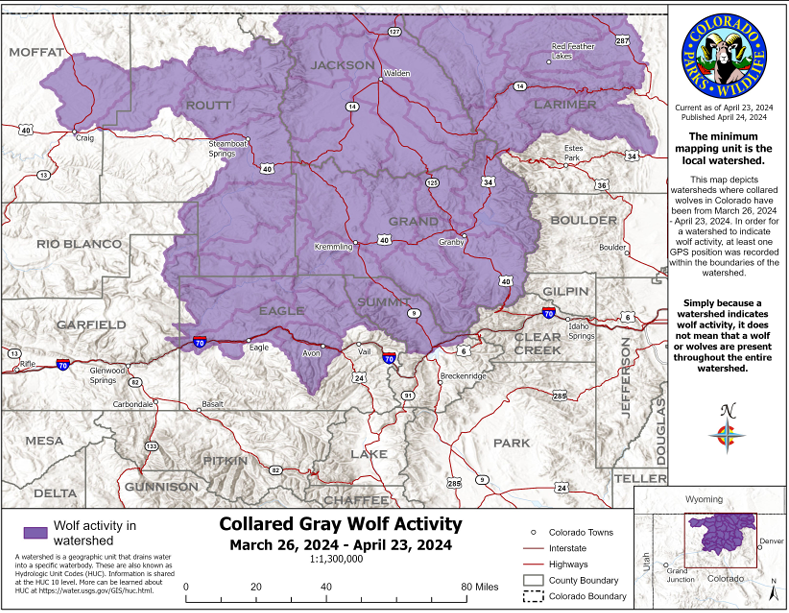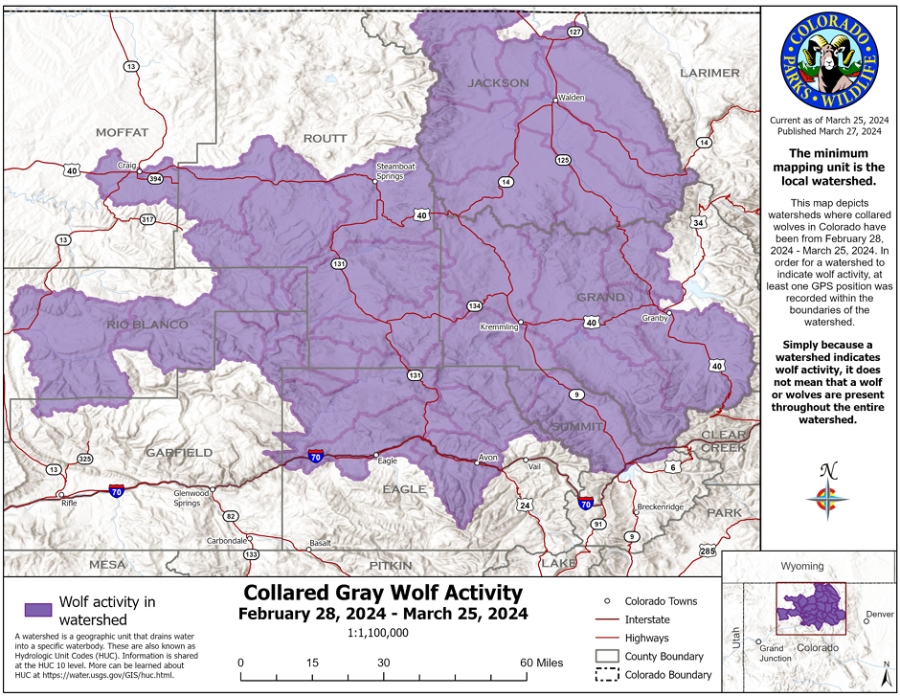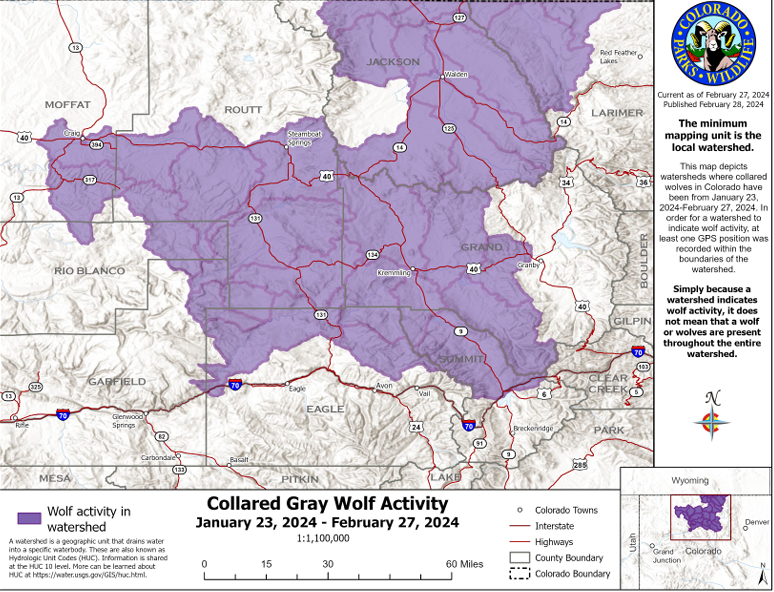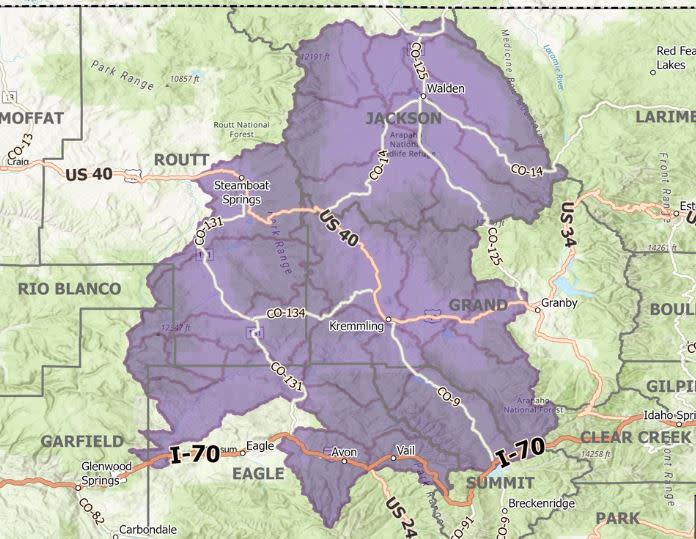Colorado launches wolf depredation report site; new movement map released
DENVER (KDVR) — In the wake of a flurry of gray wolf news, including the discovery of two dead wolves, Colorado Parks and Wildlife launched a new depredation report webpage alongside its monthly wolf movement map.
A gray wolf depredation refers to the wolf taking livestock from a rancher, usually as food, which kills the cattle. So far this year, the state has listed four confirmed depredation incidents, resulting in six deaths. Three were in Grand County, and one in Jackson, but all were reported in April.
Will we see wolf pups soon? Reintroduced gray wolves may be breeding
CPW said the list will be updated each time staff investigate and confirm a new depredation event. The goal is to keep the public informed about what CPW has investigated regarding the wolves.
The webpage lists when the wolf attack occurred, what county it was recorded in, whether a claim was submitted, and how many cattle or calves were involved. The state report shows that so far this year, two calves and four cattle have been involved in depredation events.
Ranching groups, sheriff call on Colorado to kill 2 wolves behind depredations
It does not list whether the wolf was a reintroduced wolf or a wolf that has migrated into the state, but does link to pertinent press releases that state whether the wolf was one of the 10 reintroduced over the winter.
The webpage also lists how much each rancher was given as compensation for the lost livestock. For example, a depredation event recorded on March 13, 2023, in Jackson County regarding a dog, resulted in one resident receiving $15,000. The state will reimburse livestock producers with the fair market value of the livestock when a claim is submitted and CPW confirms the gray wolf involvement.
Currently, the list goes back to December 2021, citing only three incidents that were reported outside of Jackson County, and all three occurred in April of this year.
Several stockgrower and ranching associations, along with the Grand County Sheriff, called on the state to lethally remove wolves depredating livestock. The state called the action “premature.”
Wolf movement shared through watershed maps
CPW has been sharing maps of the watersheds that the gray wolves’ GPS collar data puts them in, but not sharing more specific locations to help keep the population safe.
The map data is provided through the GPS collars that are still working — two of the original 10 have failed since the beginning of March. However, the CPW biologists say the animals whose collars have failed are traveling with wolves with functional collars, allowing them to be monitored.
CPW said it knows the wolves with nonfunctional collars are still alive because they viewed the animals from an airplane.
This map shows collared gray wolf activity recorded by CPW from March 26 through April 23, 2024. (Courtesy Colorado Parks and Wildlife) This map shows collared gray wolf activity recorded by CPW from Feb. 28 to March 25, 2024. (Courtesy Colorado Parks and Wildlife) This map shows where 12 collared wolves have been between Jan. 23 and Feb. 27. Colorado Parks and Wildlife continues to track two wolves that have made their way into Moffatt and Routt counties.(Map: Colorado Parks and Wildlife) Colorado Parks and Wildlife is tracking two wolves that have made their way into Moffatt County. A map shows where 12 collared wolves have been over the last month. (Map: Colorado Parks and Wildlife)
However, one of the two dead wolves found recently in Colorado was discovered to be one of the 10 reintroduced wolves, according to the U.S. Fish and Wildlife Service. The wolf was discovered in Larimer County and will be federally investigated because wolves are listed in the Endangered Species Act.
CPW’s movement map shows that the reintroduced wolves have been found in watersheds east of the Continental Divide and onto the Front Range. The wolves have been recorded in watersheds surrounding Estes Park and in watersheds that almost entirely cover Jackson and Grand counties.
Download the FOX31 App: Breaking news alerts & Pinpoint Weather
In their requests for wolves to be lethally removed, the Larimer County Stock Growers Association said they believe the eight counties where collared wolves have been recorded have approximately 5% of the state’s livestock population.
These counties were also areas that voted against the measure to reintroduce wolves. The group said these counties’ livestock production provides over $158 million in economic impact to the state.
For the latest news, weather, sports, and streaming video, head to FOX31 Denver.



